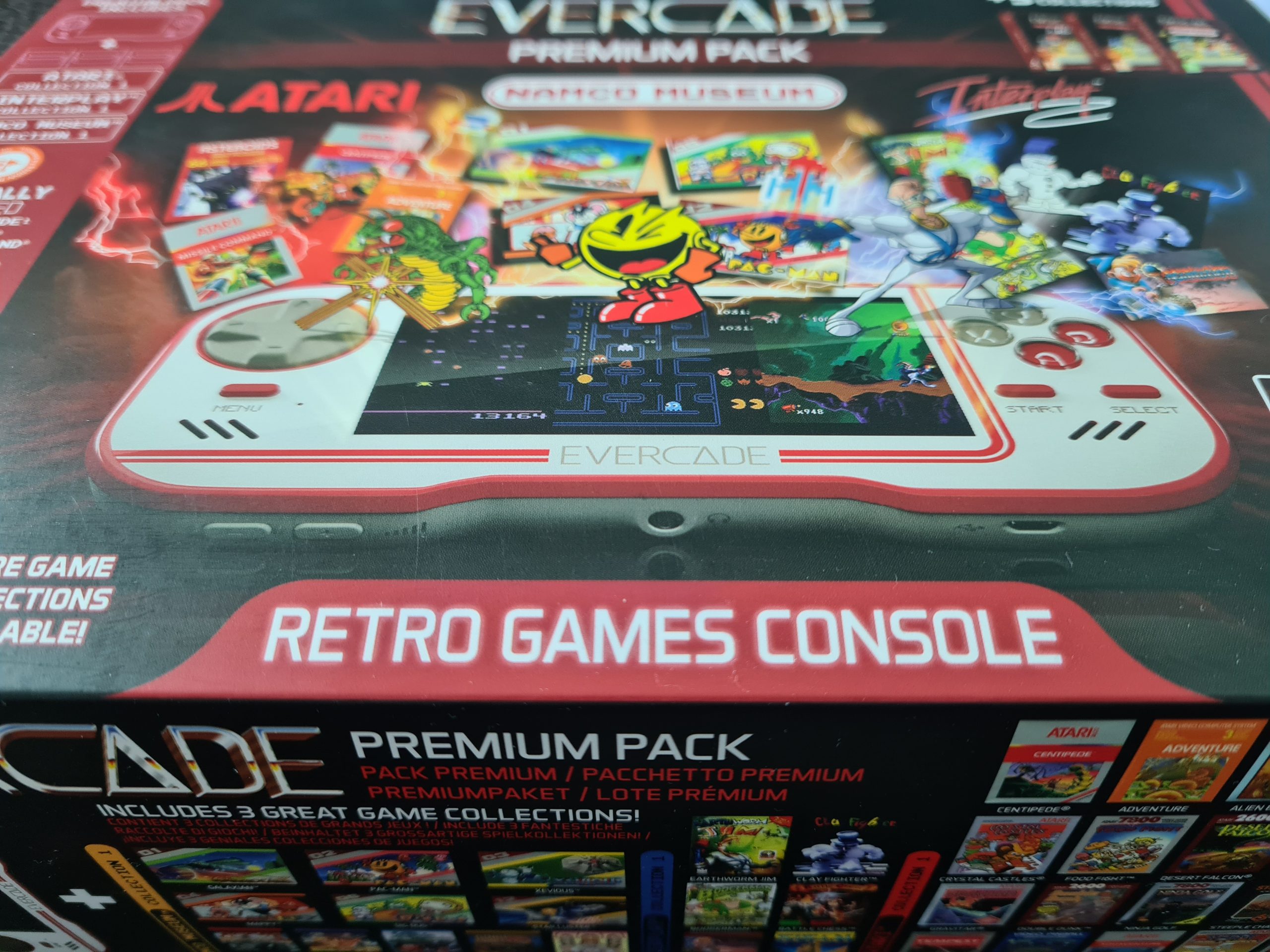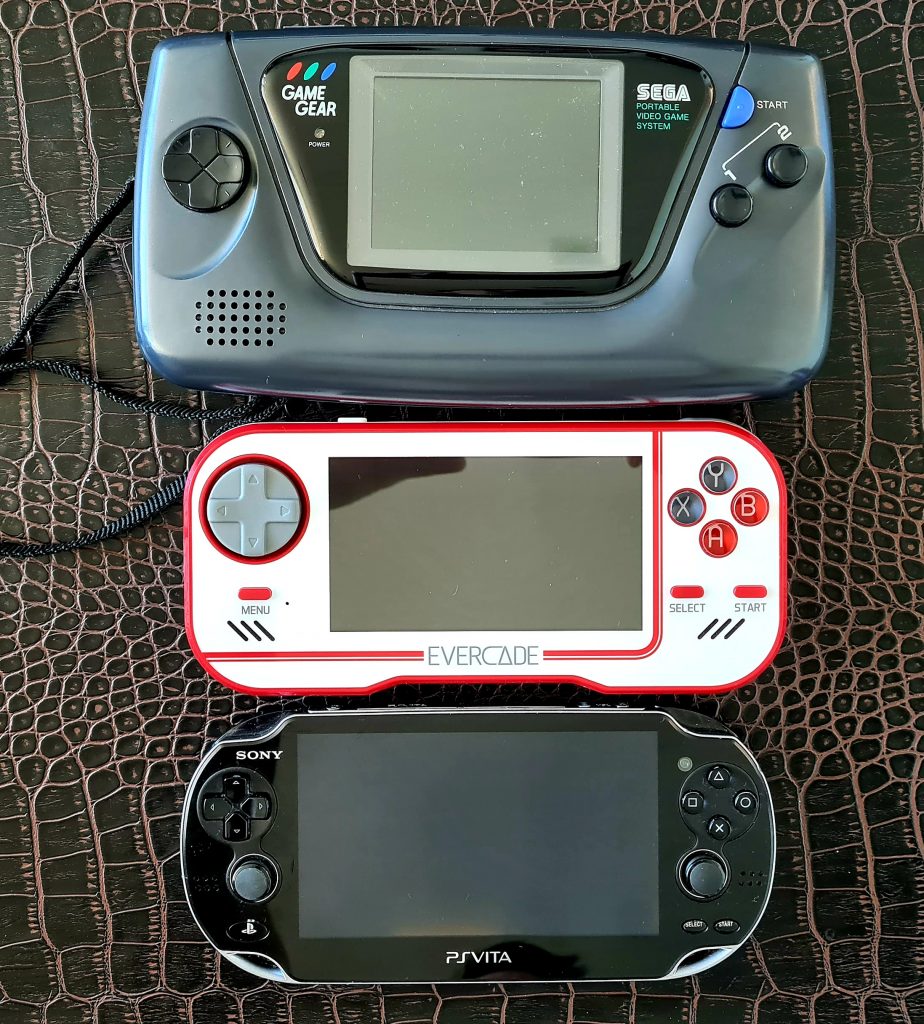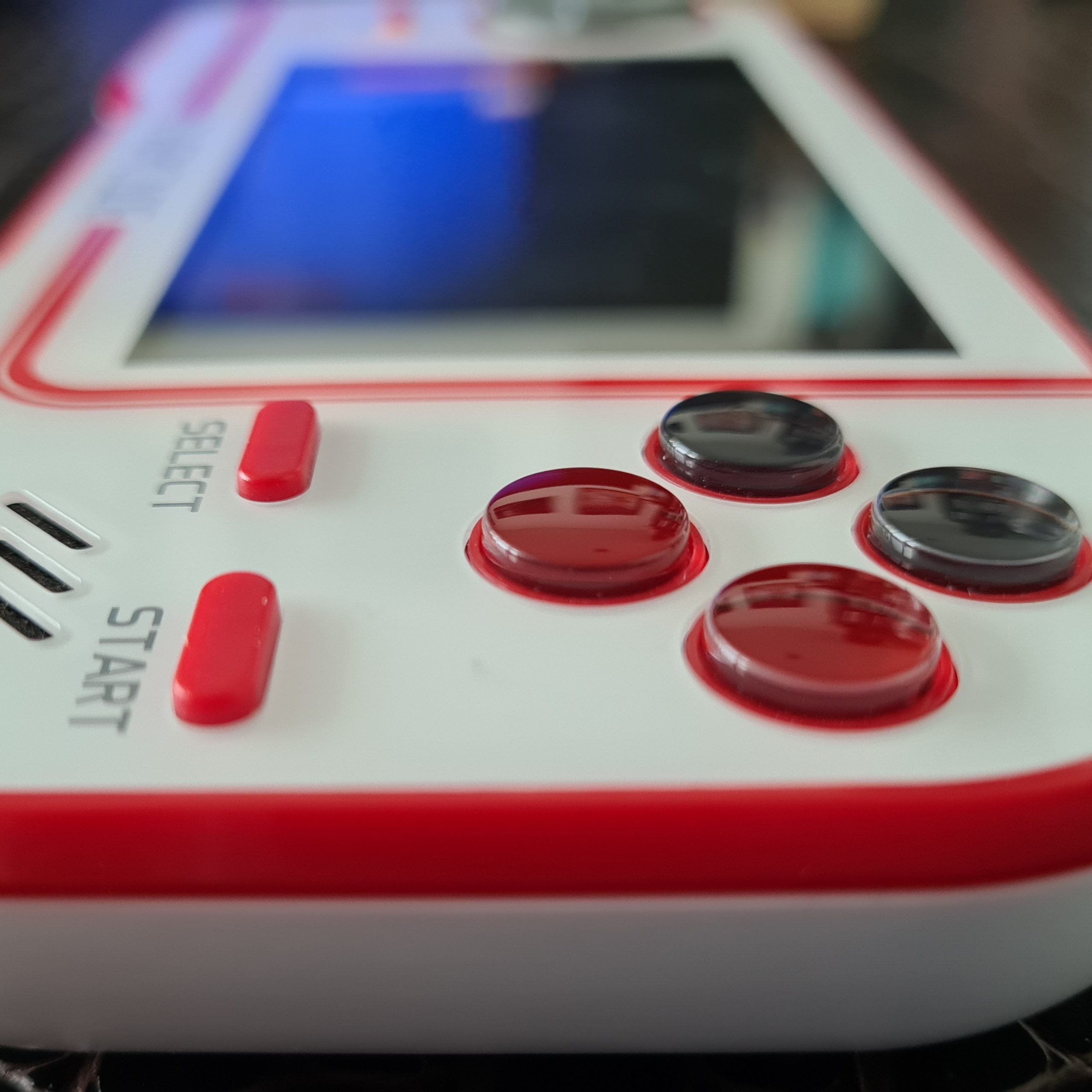
It had been 30 years since I last opened a brand new 16-bit system. That system was the Atari 520STE, and I loved it. It arrived in the household a year after the Sega Mega Drive. A lot of the kids at school were talking about a game called The Secret of Monkey Island, which they would be playing on their Amiga 500. I had to play it! Everyone had Amigas, I had the Atari, and to be honest, I was not disappointed. So my heart pumped with nostalgic joy when I was sent the Evercade Premium Pack to review.
The Evercade was released in May of 2020, in the middle of a global pandemic. Lots of people were finding video games again and if this release date was part of a late move in the business strategy…Bravo! It’s also a risky move considering the Nintendo Switch has a vast library of retro games, plus there are those who choose to emulate. The Evercade was created by Blaze, as a handheld way to experience officially licensed games from our favourite publishers of yesteryear such as Data East, Namco, Atari, Codemasters, and so on. Some of these publishers like Codemasters and Team 17 are still around today, and they are still putting out great games.
The Evercade – Good Things Truly Do Come In Small Packages
It was released with ten game cartridges comprising a total of 122 games. At the time of writing this, there are now 26 cartridges, all with instruction manuals and more to come. The BIG thing that the Evercade has going for it is the direct link it has for us retro gamers. Officially licensed 8-bit and 16-bit and eventually 32-bit games, on a cartridge that you insert into the system’s slot. It doesn’t get more nostalgic than that, and I am sure many owners blew on the cartridge pins for that ultimate nostalgic feeling. What’s more, is that it is something highly desirable to collect for and the game boxes look great on the shelf. Each one is numbered too so you just have to collect them all.

Do you own an Evercade? Do you want one? What is your favourite game collection for it? Drop your answers in the comments below out check out our social media. We love chatting with everyone.
Presentation & Design
As you can see from the image above, the outer slipcase is bursting with some of our favourite games and characters. Pull that aside to reveal a high-quality, sturdy yet minimalist in-design box that houses the contents. Open up and you are greeted with the smell. Like a new car or a book, it has a smell that is just divine. So far, so good, it smells great. A thin black but not flimsy plastic housing holds the system itself and underneath is everything else. It has the quick start guide, USB-A to Micro USB charging lead, and three cartridges; Atari Collection 1, Interplay Collection 1, and Namco Museum Collection 1. Check out the unboxing video at the end of this review for a closer look.
The console itself looks unlike any other handheld I have seen before. It has a minimalist design but still has a retro feel. Despite it being white, it really doesn’t look out of place with some of my other wide handhelds.

The system itself is gorgeous and is made from really durable plastic. Unlike some of the older handhelds, it doesn’t feel like it would break in your hands if you ever had a gamer rage moment. The shell is comprised of a matte white plastic while the front has opted for a white and red gloss finish with a red bezel to aesthetically separate the two parts.
On the face of it, you have the D-pad which looks to be modeled on the Sega Mega Drive/Genesis, and four action buttons; A, B, X, and Y. The action buttons are clear perspex with the letters in a large and very clear font. You also have left and right shoulder buttons just like you did on the Super Nintendo. Other buttons are Menu, Start, and Select. Obviously, there is the screen (protected by a screen lens) which is a 4.3-inch LCD screen with a resolution of 480 x 272 pixels and a pair of stereo speaker holes.
On the top are your power switch and mini-HDMI port so you can play on the big screen. Neatly tucked away on the bottom are the USB charging port, 3.5 minijack for headphones, and the volume controls which are buttons rather than a dial. Placing these here was a smart move because they are well out of the way. Even if you play while charging, the cable doesn’t obstruct you in any way and it is virtually impossible to alter the volume by accident.

To round it off, on the rear is the cartridge slot which can be a little tight for my liking, but it just slides the cartridge in with a satisfying ‘click’ as locks itself into place. No chance that is dislodging by accident.
So how does it feel? It honestly feels great! I don’t have particularly big hands but holding it, it just feels perfect. All the buttons are reachable. There are no sharp or jagged edges. Everything is smooth and sits just right in your hands. Everyone has their own way of holding a handheld. Mine may be different from yours, but I tried it a few different ways and never once felt any discomfort when playing for a few hours at a time. So let’s get to the important part, how it plays!
Functionality
Firstly, we need to know what makes this little emulation station tick. Within the shell, there is a 1.2GHz ARM Cortex A7 32-bit microprocessor which leads me to believe it is much more capable of processing 8-bit and 16-bit games. As mentioned before, the screen is a 4.3-inch LCD and by default, it will display games in their original format. So Atari Lynx games will display in 16:9 while home console games will display in 4:3. This can be changed if you wish to display games originally in the 4:3 aspect ratio in 16:9 which would be full screen.
The action buttons are solid and satisfying to depress and extremely responsive. The shoulder buttons do feel a little more delicate with a less audible click when depressed. The D-Pad can feel a little spongy at times but is no less responsive and offers eight-directional movement. It’s worth noting that if you are on firmware version 1.1a then you can remap the buttons how you please.

So you want to know how it plays right? Well, the first game I played was Earthworm Jim and it was faultless in every aspect! The colours were bright and beautiful, more so than I remember. The sound was crisp and clear and the stereo speakers have a little bit of heft to them if I’m honest. Same playing through headphones. There was no screen tearing or frame drops present. The controls were perfectly responsive with zero lag. My only issue was trying to figure out the controls again. Thankfully there is a booklet in each cartridge box that explains the controls and tells you a little about the game.
It goes without saying that the Evercade has the ability to emulate several systems and it does it with faultless ease. And the best part is that it is totally portable with the system being only seven inches in length. A full charge will last you up to 5 hours which is probably more than you would get out of a Game Gear with 6 x AA batteries fresh out the packet. Much like all the mini consoles that have appeared on the market in recent years, having the ability to save your game can be a godsend.
Compatibility
In terms of compatibility as such, there aren’t really any issues to talk of. The mini-HDMI will output to your TV at 720p. The charging port is conveniently located, so if you were a passenger on a long journey, just plug it into the USB port on the transport and the lead won’t get in your way at all. One thing I expected but was absent was that there was no wireless connectivity.

There isn’t any WiFi or blue tooth, which I understand because the idea is the keep the system based on physical cartridges rather than digital downloads. A bold move in itself. But it may have been an idea for those who don’t own a PC if there were to be any firmware updates. Of course, this would reflect in the cost but the system is surprisingly inexpensive. Just the system will cost you £59.99 with cartridges generally retailing at £14.99, depending on where you shop.
In November this year, Blaze will be releasing the Evercade VS which will be a home console version of the system. This will have some features that the Evercade doesn’t. You will be able to play your current Evercade games on it but with up to four players. This will be powered by a quad-core processor and be able to run two cartridges at once and will have WiFi connectivity. I will definitely need to get my hands on one of those!
Final Thoughts
If you love retro gaming, then you need this console. Releasing a brand new system that takes physical media in a digital age takes some guts. But, it really is a great piece of kit and so affordable as well. I think I speak on behalf of most retro gamers when I say “we like things”. We will always prefer physical media which makes this a fantastic new system to collect for.
The games run smoothly, it’s portable, it’s inexpensive… it’s perfect. What’s even better is that these games are officially licensed so that’s a direct link back to the publisher. If you don’t have one yet, then you need one now! Check out our unboxing video below for a hands-on look.
I award the Evercade Premium Pack the Thumb Culture Platinum Award

Disclaimer: A sample was received in order to write this review.

YouTube | Facebook | Twitter | Instagram | Discord | Podcast
